Dear Artist,
“Nothing is selling,” writes Ron Sanders of Fort Wayne, Indiana. “Last year I had my worst sales in years. What am I doing wrong?”
Ron is an accomplished painter. Ron gave me a list of what he thought were the problems — prices too high, quality needs improving, bad times in the market cycle, etc. At the same time he’s being juried into major shows, accepted for prestigious memberships, has a print contract and gallery representation. He prices his work by the square inch, and things are still lousy. Here’s what I told him:
I don’t think your prices are too high and I don’t think your quality is lacking. Paintings like The Soloist are really loaded with the right stuff. If I were digging for problems it would be that many of your paintings lack “distinction.” By that I mean they appear to be photographically derived without having a distinct feeling or style that sets them apart from the vast number of folks who copy photos. Secondly, your site is pretty darned wonderful. That may silently put off regular people — and dealers. Perhaps de-tune your site and take visitors right to your galleries and let your agents do the talking. You come off as an “artobusinessman” who will do what’s necessary in order to look good. My advice is don’t cater. Make your stuff a bit rarer. Also, your “square-inch thinking” may be part of the problem. In your quest for success you have taught yourself to paint well in a lot of genres: landscape, portrait, romantic, classical. This can appear insincere. Versatility, while commendable, is not necessarily in style. You might try following your true heart for a while if only to see what happens. Without worrying about what’s in style, I think you ought to scrabble deeper into the psychological values of the things you obviously love to paint. I’m totally curious to know what our colleagues might have to say.
Best regards,
Robert
PS: “I will paint for money any time.” (Winslow Homer) “Commerce is the great civilizer.” (Robert G. Ingersoll) “The market is the only critic.” (Walter Kirn) “Success is what sells.” (Andy Warhol) “Sell your cleverness and buy bewilderment.” (Rumi)
This letter was originally published as “What’s wrong?” on April 16, 2002.
You may find interesting the original responses to this letter, and also to learn that in the 20 years since he wrote to Robert, Ron Sanders, in addition to continuing a career in fine art, has also become an accomplished commercial illustrator and a designer for the U.S. Mint.
Have you considered a Premium Artist Listing? With each letter, an artist is featured at the bottom of this page. The Premium Artist Listings are a means of connecting artist subscribers through their work. Proceeds from each listing contribute to the production of The Painter’s Keys.
“Drink the greenness of the field.” (Mikhail Naimy)
Featured Workshop
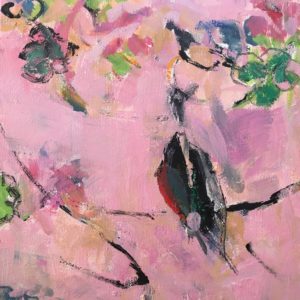 Permission to Paint Expressively Series Session 2
Permission to Paint Expressively Series Session 2
August 22-25, 2022
Join Ellie Harold for “Expressive Painting: Making Your Marks.” With a focus on intuitive mark-making, this workshop is designed to facilitate a fuller expression of your deepest and most essential artist Self. Content, process and lightly structured exercises give you permission to create the art that wants to be made by you in the safe space of Ellie’s studio and the fresh air and cool light of northern Michigan near Sleeping Bear Dunes. You’ll return home with a specific art “care plan” to assure support for “Making Your Marks” in the world. Details and registration at www.EllieHarold.com.
Featured Artist
All of my paintings are an exploration – either representational of people and nature or non-representational work that explores bits of poetry and always, nature.
I work in acrylic for non-representational work and oil for the representational paintings.
I find that the more connected I am to the content, the more successful the painting seems to be. Content comes from family, from my love of nature from travel and reading.

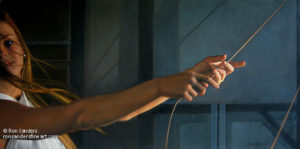
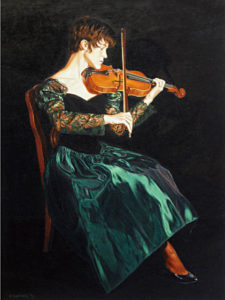
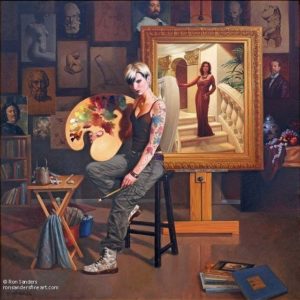
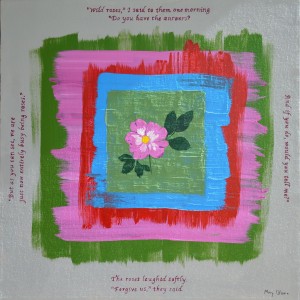
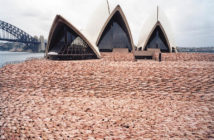
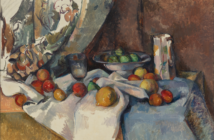
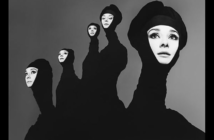
10 Comments
Thank you Sara!
Another timely and wonderful post. I love the comments you linked, even though 20 years ago, still feels very relevant to the brilliant puzzle of making and selling art. But the strongest message to me is that Ron stuck with it! Wonderful to hear about his continuing work as a fine artist.
Inspired by this visit to the painters keys. Thanks again!
Sending bright spirits to all
Dear Sara,I read of your mothers passing in the globe and mail a few days ago.I’m sorry for your loss. Jane ps I too lived in crescent beach for many years so when I read your dads comments and advice,I am once again,back at blackie spit!
Interesting, the comments about painting in [too many] different genres. I’m “guilty” of this, and I have to agree that it makes my body of work seem uneven — as if I can’t figure out what it is I want to paint. That’s partly true, in the sense that I become bored doing similar paintings over and over again. Though I spent years in classical training, I became unenthused by the hyper-rendering that caused some viewers to say, “Why not just take a photo?” Indeed, why not? Most of my work in the recent past has been plein air landscapes, quite a departure from the rigors of studio projects. But with each investigation of a new form or subject, I kind of have to re-invent the wheel, and it often shows. This calls to mind my freelance writing work, when I used to be ready and willing to write anything from ad copy to haiku to short stories and articles. Fair enough, and fun, but didn’t pay the rent. Then, when my kids were young, I spent a few years writing only in the field of children’s literature, and had my greatest success with that focus, both in publications and remuneration. I have been said (by loved ones, of course) to be “easily distracted by shiny objects,” which kind of leaves me widely experienced but less than a master at any one pursuit or genre. I’m not entirely sure that’s a bad thing. Do masters get bored with their singular mastery? Perhaps I’ll never know.
That is sooo me too!!
Let me state the obvious: Sanders is highly skilled and refined. He does great photography. I think he found his true calling at the US Mint – thanks for including that in the post script. Photo realism only really ‘works’ when the unnecessary or distractions have been left out. And the same can probably be said for most actual photos, not just paintings.
There are surges and delays in the art market which bear little connection to what we’re painting. Robert’s advice was really good. As we used to shout in scrub football, “go deep!” It’s the best way out of the doldrums.
If he prices his paintings “by the square inch”, I have a suggestion: Perhaps his paintings should simply be…larger. :-)
Really worth taking the time to read the comments on the original post of this letter, as well as the ones here on the repost. I used to say, and still say, thank goodness I don’t rely on painting sales to feed my family. I’ve always been that artist who lived with someone who brought home a regular paycheck. I feel for those who commit to making art as their living profession. Some have made it a successful career, some struggle and fall to the demand of “what sells” and stay in that cubicle to paint in. I love Robert’s advice, he’s so right on all suggestions. Websites overloaded with bells and flashing motion tend to turn me off, especially when the actual artwork featured among the cyber extravaganza is mediocre. Complicated world we live in as artist, always best to calm down and listen to our hearts before we pick up a brush.
great response
Photographs are there to inspire the artist- the more photos the artist looks at to ruminate about and utilize in the pursuit of an idea for a painting, the better. The artist Sam Claybourne once told me to make a sketch from your photograph and then throw it away! Work from the sketch. Whatever, I’m a believer in the more, the better when it comes to sources. In this way, you create your own individual concept using many different images which often get blurred, smudged, removed, changed, or totally obliterated in service to the composition. Just don’t slavishly copy one photograph, because, what’s the point? The same goes for realistic depiction. We’re artists, we don’t look back. Creativity is the name of the game. Think Guernica.